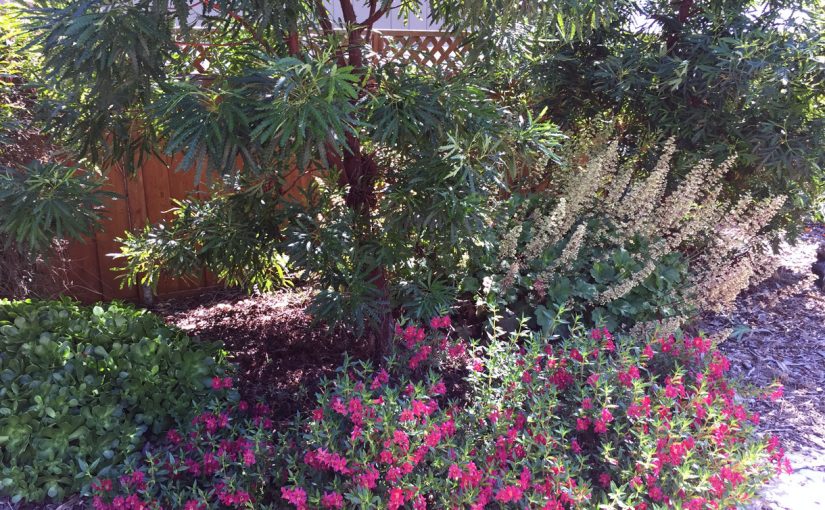Spring comes and changes everything in the garden!
This garden really began to evolve after the good winter rains of 2017-18. In the first year most of the large shrub and tree plantings were installed in the fall and winter. This gave all of the plantings the benefit of good root growth before the spring. We also threw down some wildflower seeds that got entirely out of control—in a good way.
The rock path was laid down mid spring/early summer. It connected the patio to the house and gave the garden a non linear flow. During the sheet mulching phase, we discovered lots of pavers buried around the yard from a previous owners use. This was a significant bonus as there was a LOT of stone material that would have been costly to purchase and much work to move on site. This path was built over several weeks an afternoon at a time using the found pavers.
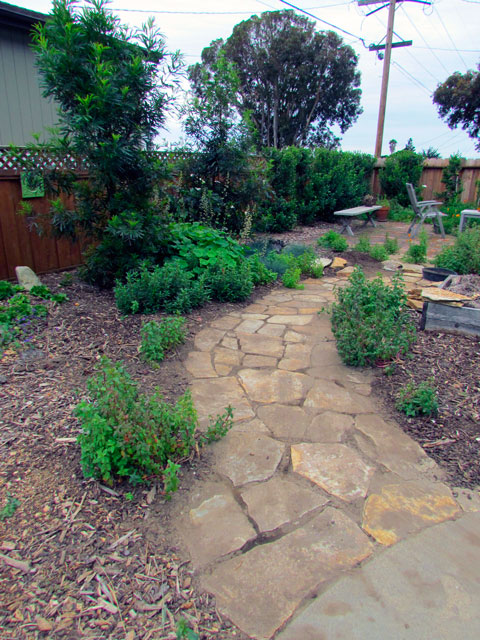
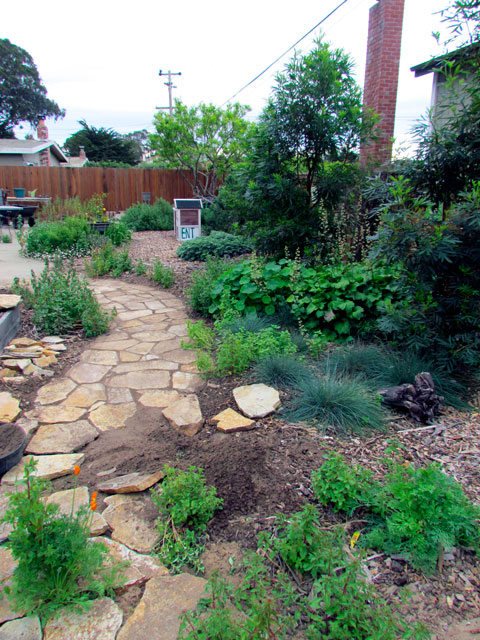
The photo below shows how fast the Catalina Ironwoods grew in one year and blocked the neighboring wall as desired. Understory plantings included the native Huecheras, Sticky Monkey and blue fescues. We did not gopher basket the grasses and the gophers ate ALL of them over the summer. Lesson learned—put everything gophers find tasty in baskets.
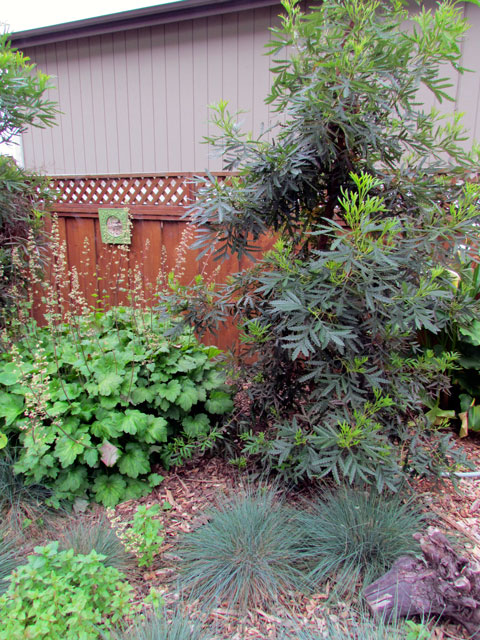
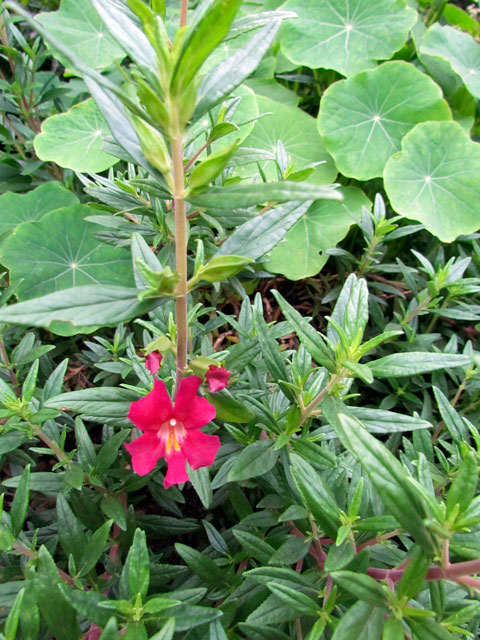
The path firmly connected the house to the patio and invited exploration. The backbone shrubs such as the Italian buck thorns along the windy edge were filling in and were topped to keep to fence height and promote more side growth. An Italian buck thorn can grow over a foot a year and will top out at about 20 feet if left un-pruned. They are very drought tolerant once established and make an excellent dense privacy screen.
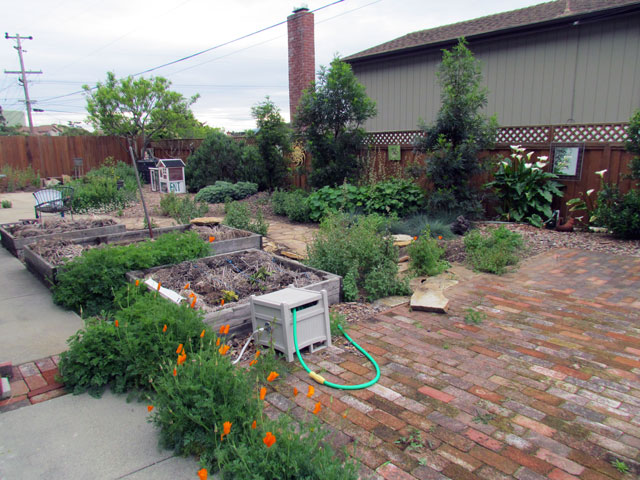
On the dry side yard, by the street access gate (where the small apple tree had been originally) we planted a California Flannel bush (Fremontodendron californicum). It will grow to 25′ if not trimmed and will make a lovely yellow flowering focal point viewed from the patio that requires no summer water. A note of caution: this shrub has fuzzy irritating hairs (hence the “flannel bush” name) and pruning without eye and skin protection is not advised. The flannel bush is best planted away from points of close contact and should be given plenty of room! In the photo below, the flannel bush has already doubled in size from the original 5 gallon pot.
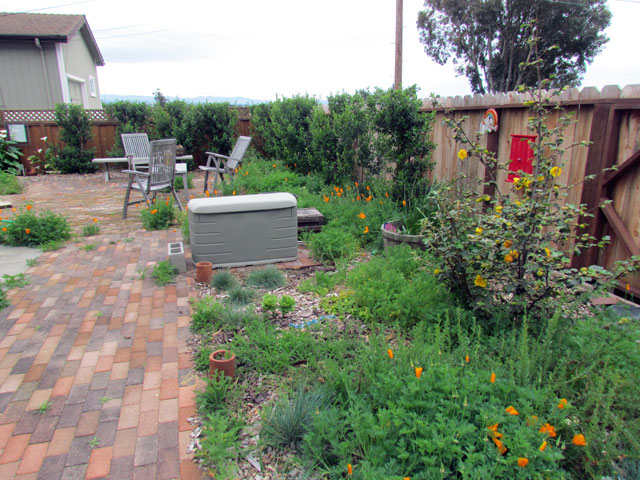
Gardens are always evolving. The sweet spot is to accept and enjoy the changes that develop over time knowing that there will be MANY singular moments when the garden is “perfect”. Yes, the gophers ate the blue fescue, but they were replanted the next fall with economical 6-pacs using wire baskets. The gophers come for the California poppies, but there are many to share
Up next: the Pollinator garden mound
